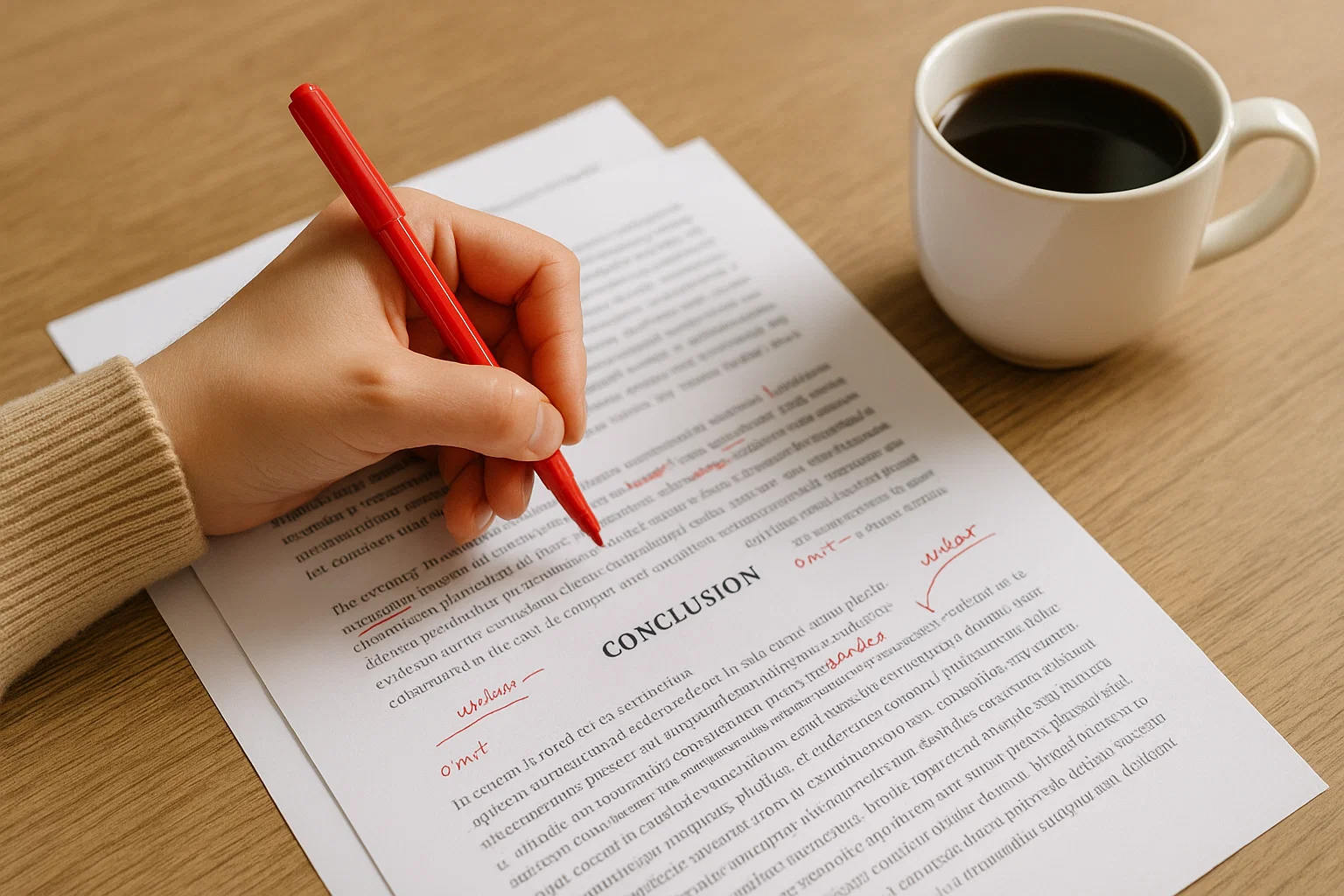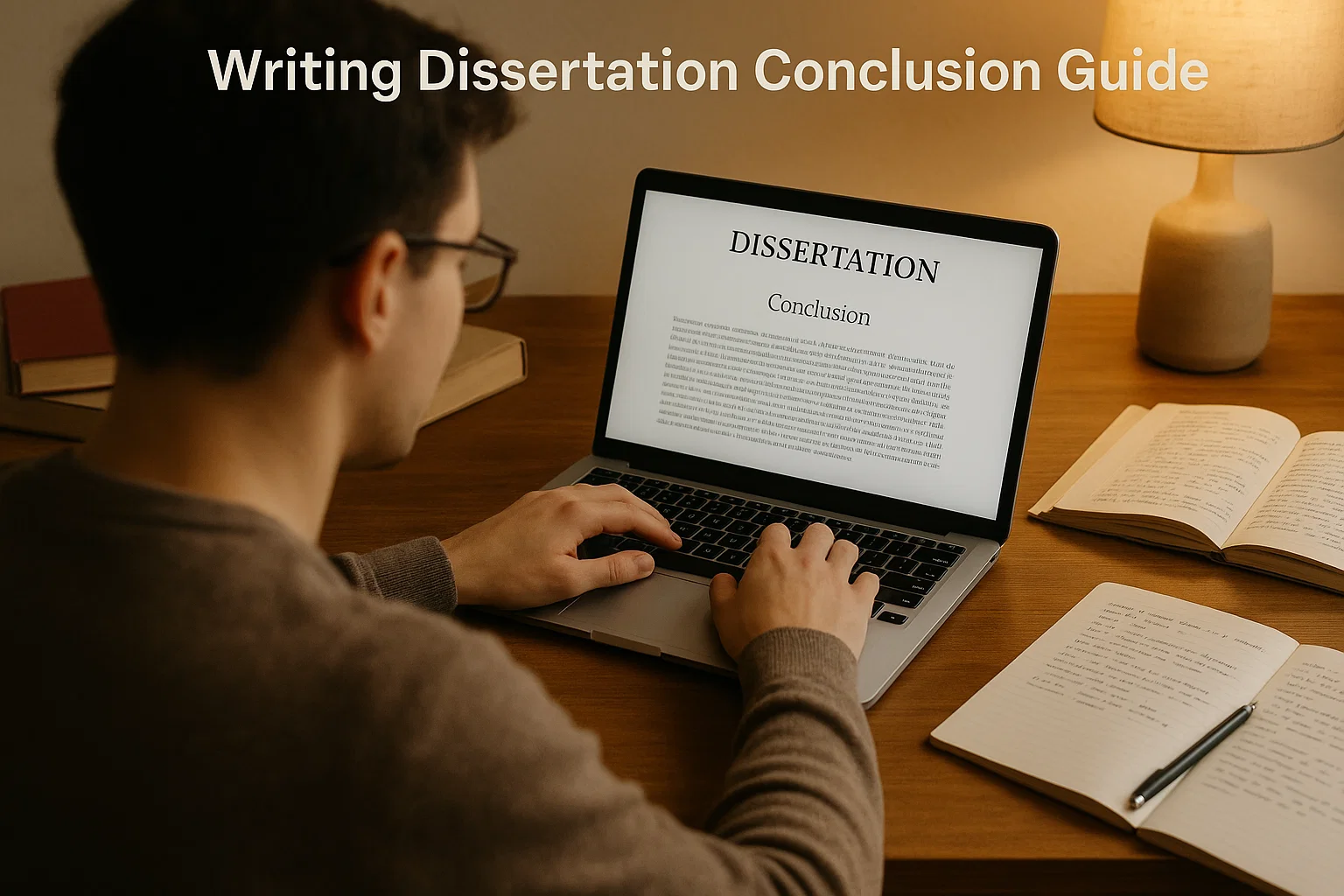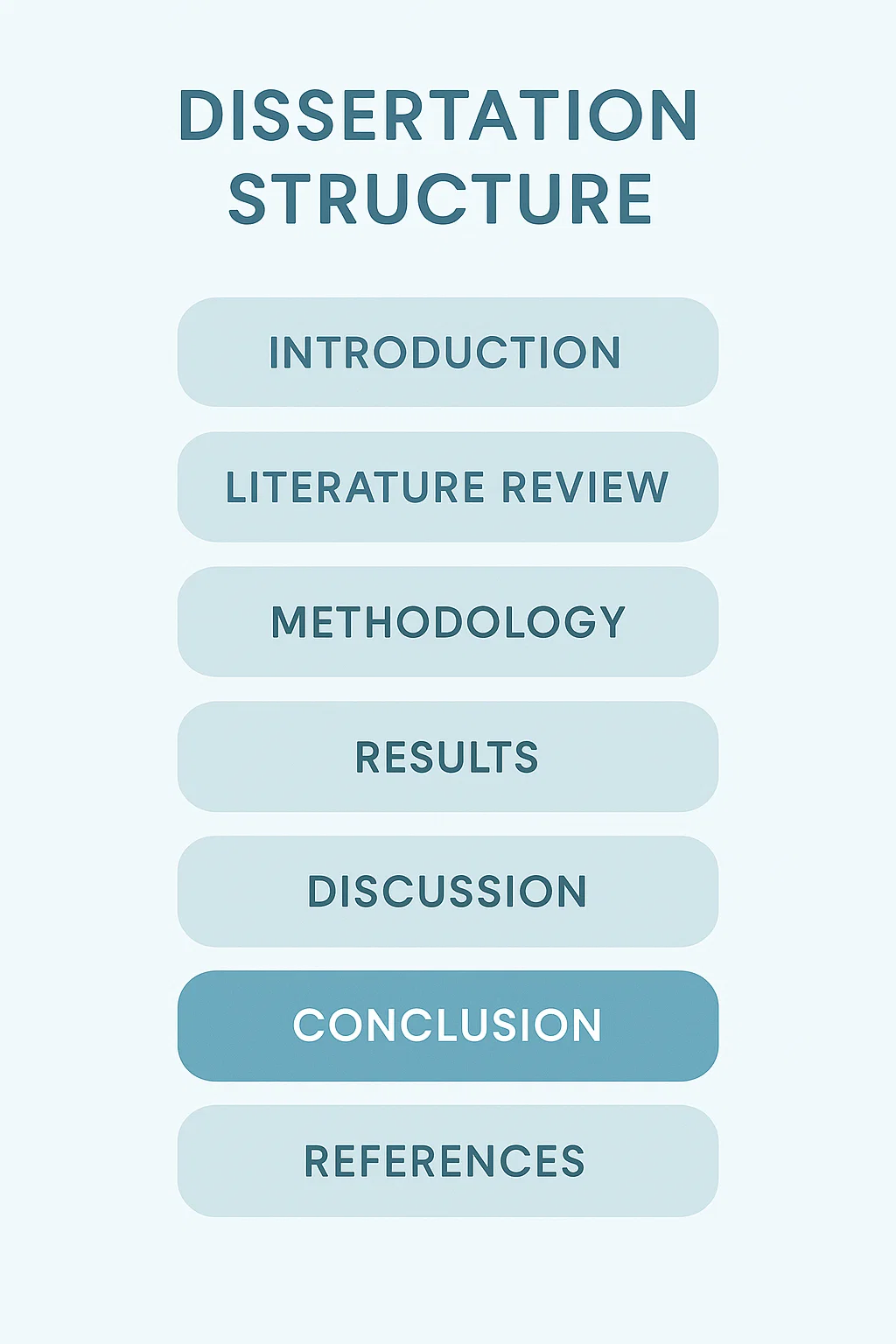It’s a common trap most students underestimate how powerful the conclusion is. But here’s the truth: your dissertation conclusion isn’t just a polite goodbye. It’s the part that decides how your work feels when your examiner puts it down.
Let’s make sure yours ends with confidence not confusion.
Why the Conclusion Matters More Than You Think
Think of your dissertation as a long, detailed conversation with your reader. The conclusion is the moment you finally say, “Here’s what it all means.”
It’s not a summary dump or a repetition of your chapters. It’s your final chance to show clarity, reflection, and mastery of your topic.
A strong conclusion answers the question:
“So what?”
If your examiner finishes reading and immediately understands the importance of your work that’s a win.
The conclusion also sets the tone for your academic maturity. It shows you can step back, see the bigger picture, and discuss how your research fits into the wider world.
Understanding What a Dissertation Conclusion Actually Does
Let’s clear up a common confusion the conclusion is not your discussion chapter.
Your discussion dives deep into analysing results and connecting them to theories.
Your conclusion, on the other hand, zooms out. It’s about giving closure and significance.
Here’s what it usually includes:
- A brief recap of your research objectives and what you achieved.
- A summary of your key findings in simple, non-technical language.
- A reflection on what those findings mean for the field.
- A note on limitations and where future research could go.
- A final statement that leaves an impression thoughtful, not cheesy.
It’s the “movie ending” of your dissertation the emotional and intellectual tie-up.
How Long Should a Conclusion Be in a Dissertation?
There’s no one-size-fits-all answer. But there’s a rhythm to follow.
As a rule of thumb:
Your conclusion should be around 5–7% of your total word count.
So roughly:
- For a 5,000-word project → 250–350 words
- For a 10,000-word dissertation → 500–700 words
- For a 15,000-word dissertation → up to 1,000 words
If it’s longer than that, you’re probably rehashing too much content.
If it’s shorter, you’re probably not offering enough closure.
Pro tip: Write it last but plan it early. Jot down what you want readers to feel at the end. Confidence? Curiosity? Inspiration? That emotion will shape your tone.
Key Contents of a Great Conclusion
Let’s break it down into five simple ingredients that make a dissertation conclusion truly work:
- Restate your research aim clearly.
– Show you’ve achieved what you set out to do. - Summarise your key findings.
– No jargon. Just the story of what you discovered. - Discuss the bigger picture.
– Why does your research matter? Who benefits from it? - Acknowledge limitations.
– This shows honesty and awareness not weakness. - Suggest future research or applications.
– It’s like passing the torch to the next researcher.
Here’s a simple structure cue:
“This dissertation set out to explore…”
“The findings suggest that…”
“While this study was limited by…”
“Future research could build upon…”
“In conclusion…”
Use transitional language that feels natural. Think of it as gently leading your reader home.
Writing Techniques That Make Your Conclusion Stand Out
You don’t need dramatic language or long sentences. What you need is clarity and tone.
A few practical tips:
- Use active voice “This study demonstrates…” sounds stronger than “It has been demonstrated.”
- Avoid new data or surprise findings that belongs in the discussion.
- Echo key phrases from your introduction it makes the dissertation feel cohesive.
- Keep your sentences short and steady your reader’s energy is running low by this stage too.
- Don’t say “In conclusion” five times. Once is enough.
Here’s a trick: read your conclusion out loud. If it sounds like a confident summary, you’re on track. If it sounds like you’re pleading your case, trim the excess.
Good Examples of Dissertation Conclusions
Example (Humanities):
“This dissertation has examined how social media reshapes modern identity. Through an analysis of online interactions and digital personas, it revealed how individuals craft self-representations that both challenge and conform to societal norms. Although limited by the study’s sample size, these findings contribute to understanding identity in digital culture and pave the way for further qualitative exploration.”
Example (Science):
“The research confirmed that exposure to ultraviolet light accelerates polymer degradation. This supports previous theories on environmental ageing and highlights the need for further experiments under variable humidity conditions. Overall, this study expands current understanding of polymer behaviour in outdoor applications.”
Notice something? Both end cleanly, confidently, and without drama.
Common Mistakes to Avoid When Wrapping Up
Even smart students fall into these traps:
- Rewriting the abstract. Your conclusion isn’t a copy of the first page.
- Listing every chapter. That’s the table of contents, not the conclusion.
- Adding new arguments. Nope save those for your next paper.
- Sounding robotic. Replace “It can be concluded that…” with something more personal like “The evidence strongly indicates…”
- Forgetting your objectives. Always circle back to your research question it’s your compass.
Keep it reflective, not repetitive. The reader should feel like you’ve closed the circle, not started a new one.
Can You Finish a 10,000-Word Dissertation in 2 Weeks?
Let’s be honest it’s tough, but not impossible.
If you’re disciplined (and slightly caffeinated), you can pull it off.
Here’s how to stay sane:
- Outline everything first. Don’t start writing blind.
- Write in focused blocks 3 hours on, 1 hour off.
- Save editing for the end. Don’t get lost fixing commas mid-sentence.
- Use productivity tools like Notion or Scrivener to keep chapters organised.
- Start with the conclusion plan early. Even if it’s just a few bullet points, knowing how it ends helps you shape the rest.
You don’t need perfection you need progress. And momentum builds confidence.
Polishing and Proofreading Your Final Chapter
Once your conclusion feels solid, step away for a day.

Fresh eyes always spot clumsy lines.
Then:
- Read it aloud. You’ll instantly hear what sounds off.
- Run it through Grammarly or any AI writing assistant for style, not ideas.
- Ask a friend or mentor to read just your conclusion and tell you what they think your research was about. If they get it right, you nailed it.
And please, back up your file. Twice.
Your Research Deserves a Strong Finish
Your dissertation conclusion isn’t just another box to tick it’s your final handshake with the reader. It’s your chance to show not just what you did, but what it means.
Whether your dissertation was 5,000 or 50,000 words, end it with clarity, purpose, and a touch of pride.
Because when that examiner reads your last line, you want them thinking,
“This student really gets it.”

Rachel combines her technical expertise with a flair for clear, accessible writing. A graduate of the University of Edinburgh, she specializes in creating detailed tech-focused content, Govt Jobs, Payslips that educates our readers about the latest in web development and SEO tools at Spinbot blog.

